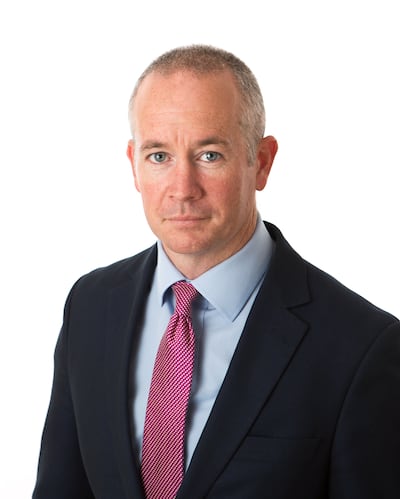“As a rule of thumb, if you are offered a tax-free lump sum, take it,” says Andy Dixon, head of business development and marketing at Harvest Finances.

“Because whatever is left over is going to form your retirement income and you will pay some degree of tax on that income, depending on other income sources.”
Defined benefit scheme pensions offer this trade-off between lump sums and residual income but are less popular these days, with defined contribution pensions emerging as the new model.
“The vast majority of our clients are in defined contribution schemes, where the final income is essentially a function of what you and your employer have contributed,” says Dixon.
READ MORE
“In the older schemes the employer took the risk; in the newer contribution schemes it’s up to the individual to maximise the contributions.”
Individuals in defined contribution schemes can avail of a lump sum of 25 per cent of the overall fund – or €200,000, which is the upper limit – though, to avail of that amount, the overall fund would have to be worth €800,000.
More commonly, if someone has a fund of €200,000, for example, they can take €50,000 in a tax-free lump, leaving €150,000 in their post-retirement pension fund.
Coming up to retirement, employees have the option of topping up their pension but rules regarding age and percentage of salary apply; for most PAYE employees, the amount they see at six months before retirement is what they will get, says Dixon. The only way to alter this, really, is to plan years in advance.
However, if you are a business owner or C-suite executive, there are other options as retirement approaches. Last year the 2022 Finance Act introduced significant changes to the personal retirement savings account (PRSA) pension. It removed any benefit in kind (BIK) taxes on the employer contribution and it also removed funding restrictions.
“Essentially it meant it didn’t matter about the underlying salary or how long you were in the job – you could inject €2 million into the fund – which was the limit in Ireland anyway. Or inject enough to bring it up to that threshold,” says Dixon.
“So, we have had some clients make sizeable contributions, in the region of between half a million and a million euro.
“This can occur where, for example, a husband-and-wife team run a business full time but may not have taken huge salaries. This eliminates the need to run complex calculations over the years. Now, they can just inject €500,000 from the balance sheet into their pensions.
“In fairness, this amendment to pension planning has really achieved one of the main goals of the national roadmap to pension reform, which is to simplify the process.”
John Lowe, a financial adviser and author better known as the Money Doctor, believes Ireland’s pension is an excellent investment option, especially for individuals on the 40 per cent tax rate.
“For people on the higher rate of tax, every €100 invested in a pension returns €40 from the Government by way of tax relief. Compare this to stock market returns from the period 1991 to 2020 which only reported an annual growth of 10.72 per cent,” he says.
Lowe agrees with Dixon about taking the full tax-free amount.
“I recommend that everyone take the tax-free allowance – which is the main reason to invest in a pension – as the balance is taxable at the lower rate of 20 per cent, which is still a net gain.
“As the pension bomb draws nearer – there will be 800,000 retirees over the age of 66 looking to receive €265.30 from the State pension and that pressure may result in the State Pension being abolished – I can only recommend taking the lump sum if it is within your grasp,” says Lowe. “Or, if you are younger, then starting your private pension now.”















